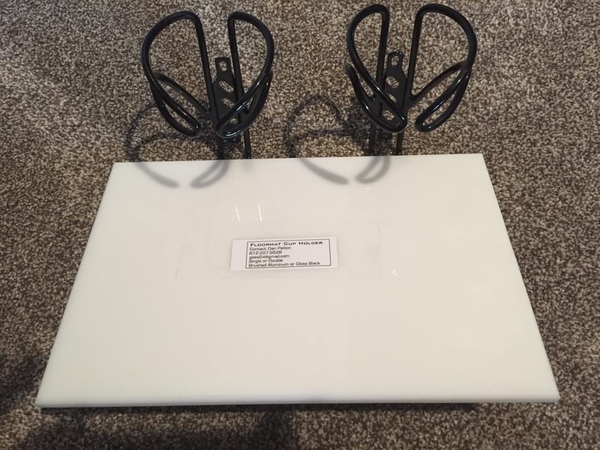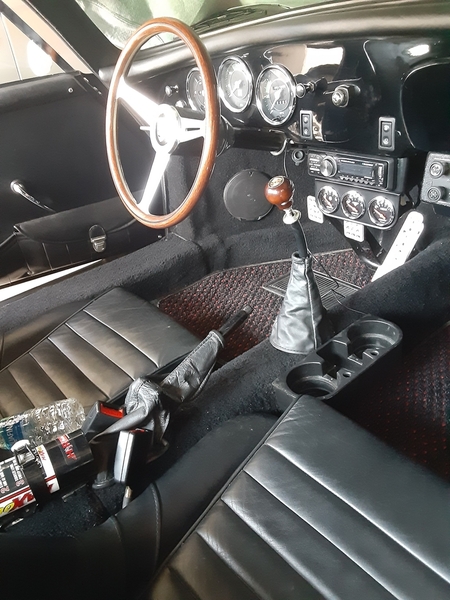i was a pump jockey for Shell in mid 60s before Nam...we checked the oil, cleaned glass etc..never got a tip except for 1 guy in back seat,,had a Rolls with red S on plate for Senator from somewhere,,,this was right outside DC lines in MD. gave me a buck..i remember it well..
I worked at a Mobil station in the early 80s instead of going to college.
It was 56-1/2 hrs/week for $4/hr (all straight-time), and I brought home $350 after taxes every 2 weeks. I believed this to be fair compensation, and all I could hope for in economy of the time. We started at 7:00 and worked until 5:30, with an hour (unpaid) for lunch. I got Wed. afternoons and Sundays off. I changed oil, tires, exhaust, and brakes (occasionally) - it was generally the work nobody else wanted.
Winter was magical - changing big truck tires required laying under the trucks in the snow outside, and every car that went up on the rack had an undercarriage packed with snow. Once the car came inside the door, the race was on - would I be able to drain the oil, hit all the grease zerts, and check the differential fluid before the snowpack dropped on my head in a giant slush-ball? Or would this be like every other day? I remember water actually running out the legs of my pants after gray slush dropped on my head, ran down my back, made its way though my butt-crack, and trickled down the inside of my legs. As I stood there, getting soaked to the bone, every third person would blithely remark, "if it's going to be cold, at least there is snow". I remember wanting to do them bodily harm, but smiling and saying something equally vacuous.
Slightly better was changing the automatic transmission fluid on a GM car, regardless of the time of year. A drain-plug would have cost an additional $.50 per car, so the General (and Mr. Ford as well) decided that none of us grease monkeys needed one. As such, it was a physical impossibility to do the job without dousing oneself in sticky brown transmission fluid. If I was lucky, there'd be one waiting for me on the rack at 7:00 AM, so I could go through the entire day soaked in oil and smelling like a superfund site. The stink of it wouldn't wash out, though I'd try to scrub it out with dishwashing soap if I had a date that night. My hands had perpetual black deposits in the nailbeds and callouses. No amount of GoJo would touch it. I'd shower every night and again in the morning, but whatever was embedded in my skin discolored the carpets in the house and ruined the sheets on my bed.
I changed more semi and tractor tires (by hand) than I can count. I once had a battery explode in my face while jumping a car. I immediately stuck my face under the garden hose, but the acid ate my shirt off my body. I got another from the house, but was docked for the time. I was glad I wasn't wearing a Jacket because then I'd have needed to buy a new one of those as well. The pants were unscathed because they were 100% poly work pants (the kind that are like wearing chaps made out of garbage bags). I provided my own work clothes. I can't remember ever being warm in the winter.
One summer, I had a radiator blow while I was trying to take the cap off of an overheating car too soon (so I might go to lunch a half-hour late, rather than miss it altogether), and received 2nd degree burns over my entire upper body for my efforts. I got a couple of (unpaid) days off with the burns, but no work-comp. I paid my own medical bills, which amounted to a trip to Tremont Medical Clinic for some gauze and ointment. At least it hadn't ruined any clothes.
All of this happened well before my 19th birthday.
I'd watch "the drive" from 11:00 until 12:00 when Gene Koch ("Gene, Gene, the drive watching machine") was at lunch. Smokes sold for $.35/pack, and I'd fill the car, fetch a pack of L&Ms, and check all 4 tires while Mr. Important sat in his car blowing smoke out the window.
I never, in 3 years of doing this, got a tip from anybody. Not once.
On Christmas Eve (which was a normal work day), Elmer Bruner would bring in a jug of homemade boysenberry wine and we'd drink a bit of it from Dixie cups, but that was it.
There was nowhere to go but up from that job.








